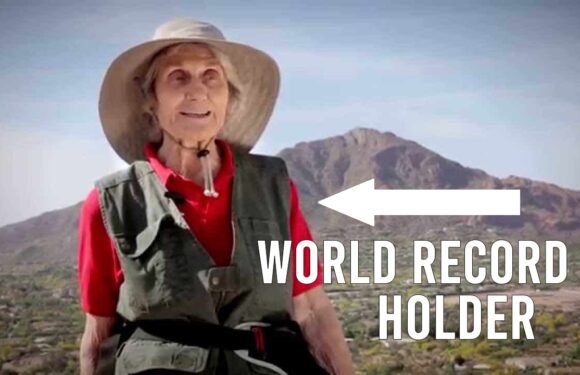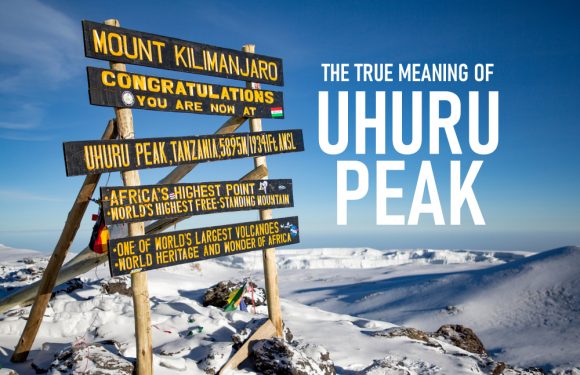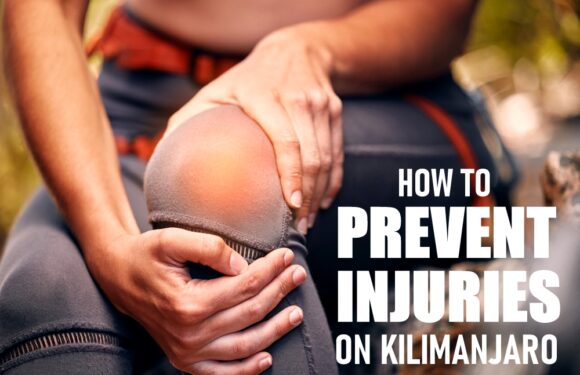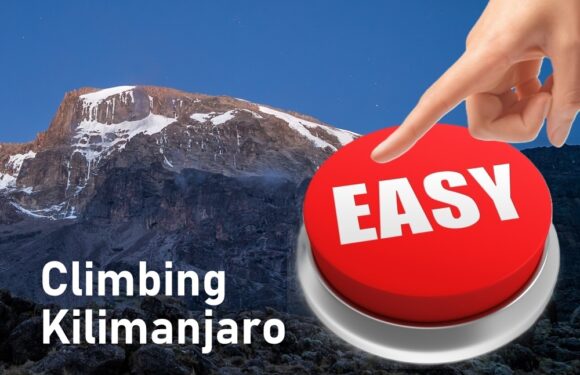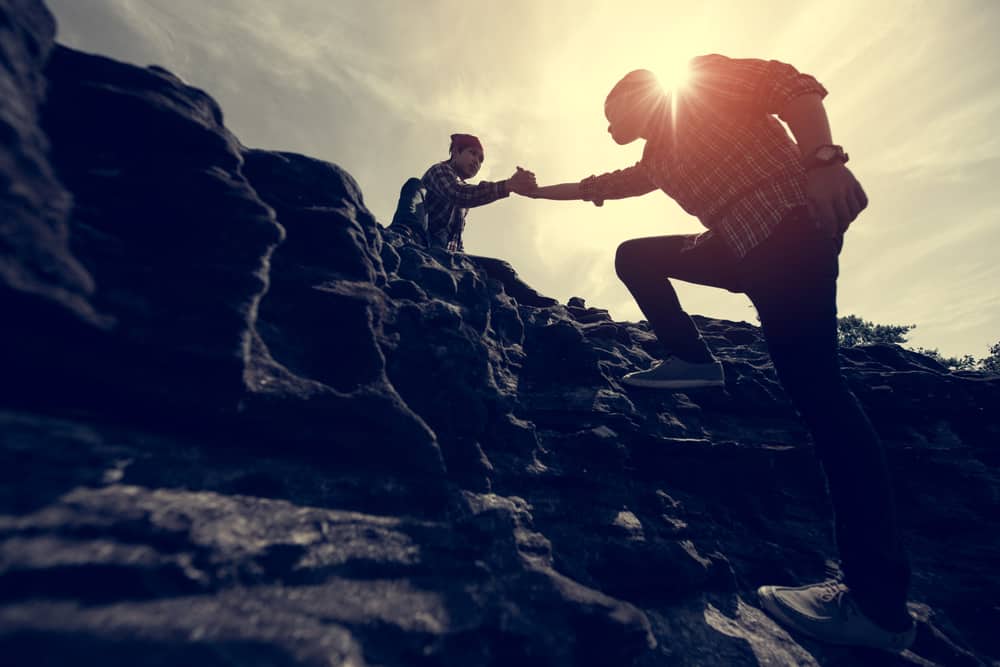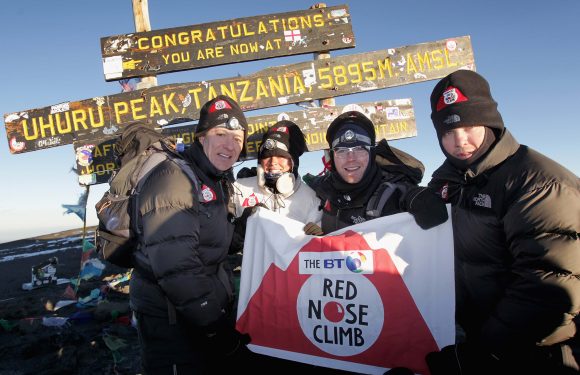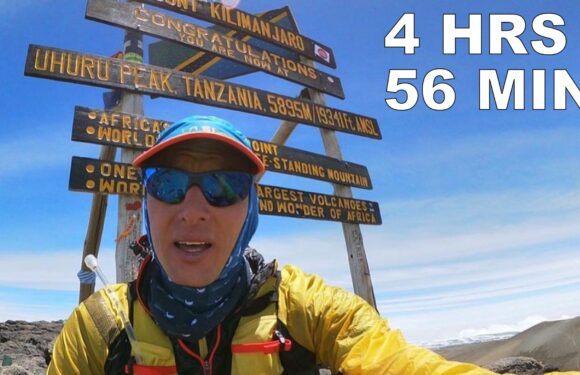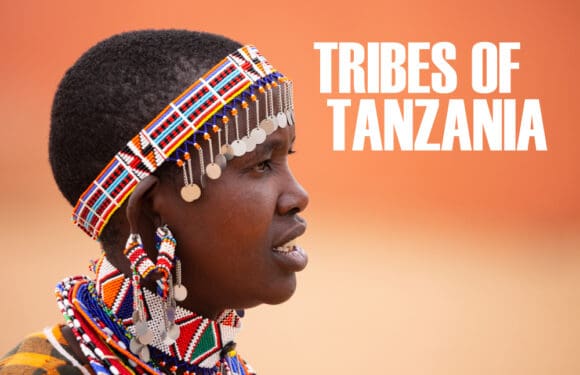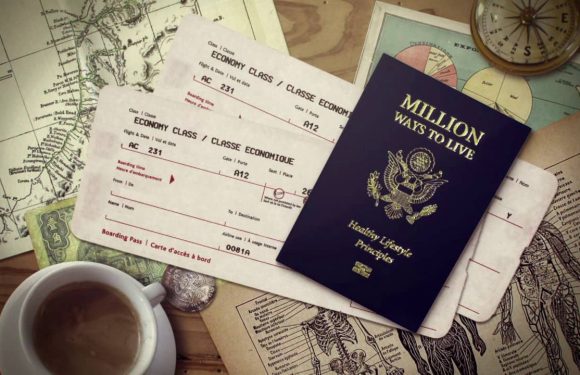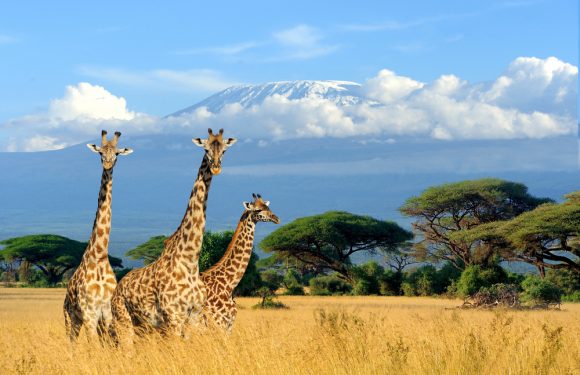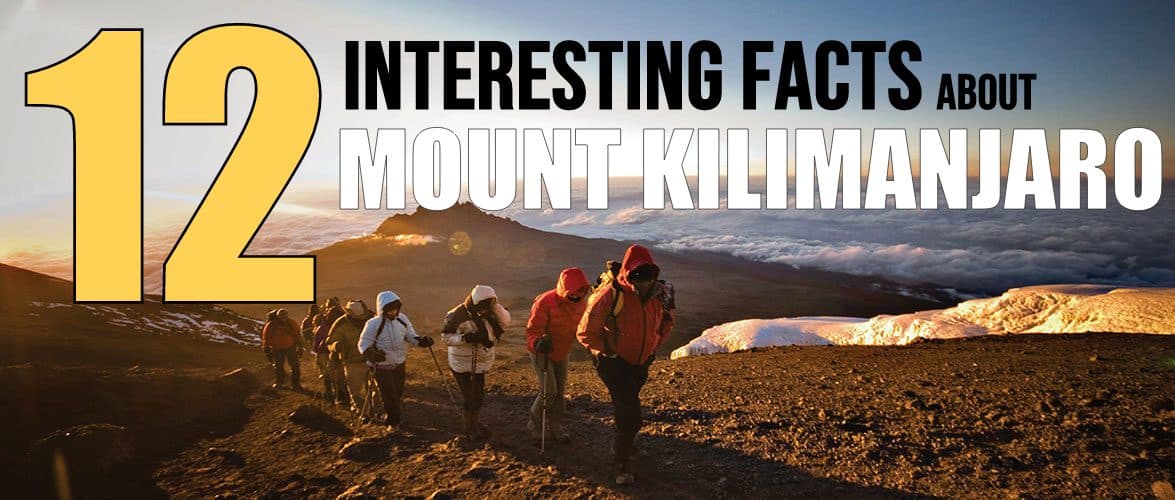
Are you looking for facts and figures on Kilimanjaro? We are Ultimate Kilimanjaro®, the #1 guide service for climbing Kilimanjaro. Our expert guides lead 150 climbs per year for over 1,000 visitors, so we know the mountain very well.
This article lists 12 interesting things about the Roof of Africa that might surprise you.
1. Mount Kilimanjaro is one of the seven summits.
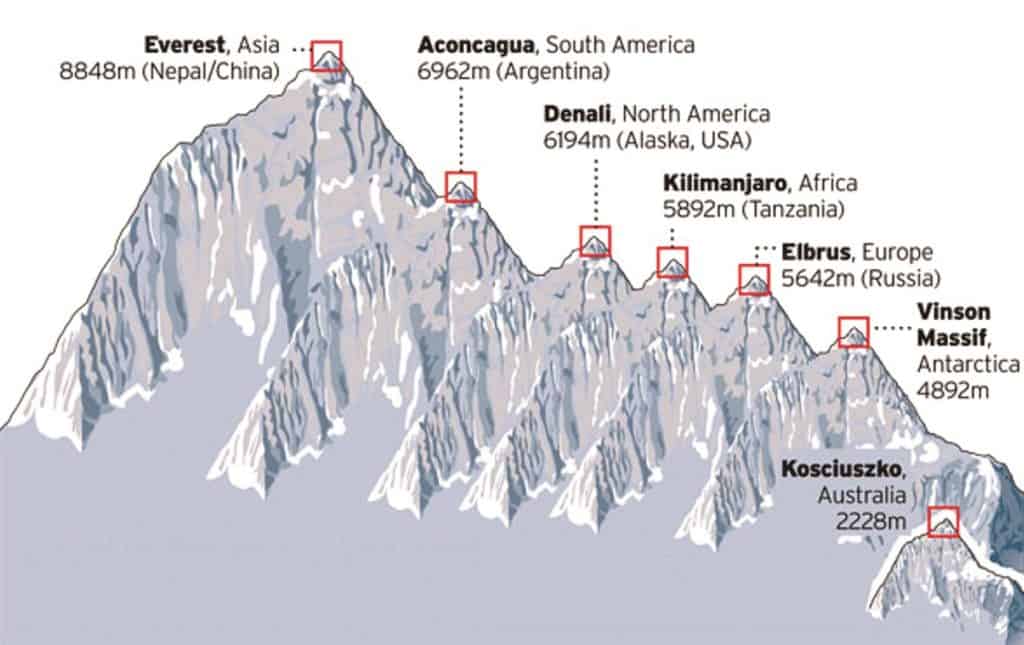
Mount Kilimanjaro is the tallest mountain in Africa, making it one of the seven summits. Here are the seven summits in order from highest to lowest.
- Asia: Everest (29,035’/8850m)
- South America: Aconcagua (22,834’/6960m)
- North America: Denali (20,310’/6,190m)
- Africa: Kilimanjaro (19,340’/5895m)
- Europe: Elbrus (18,513’/5642m)
- Oceania: Carstensz Pyramid (16,023’/4884m)
Kilimanjaro is very popular with both experienced hikers and first time adventurers because it is considered to be the easiest of the seven summits. Scaling the mountain requires no technical skills or equipment, such as rope, harness, crampons or ice axe. Therefore, it is a hiking or “walk up” peak, not a mountaineering or climbing peak. Many people who climb Kilimanjaro have no significant hiking or backpacking experience when they arrive.
2. Kilimanjaro stands on its own.
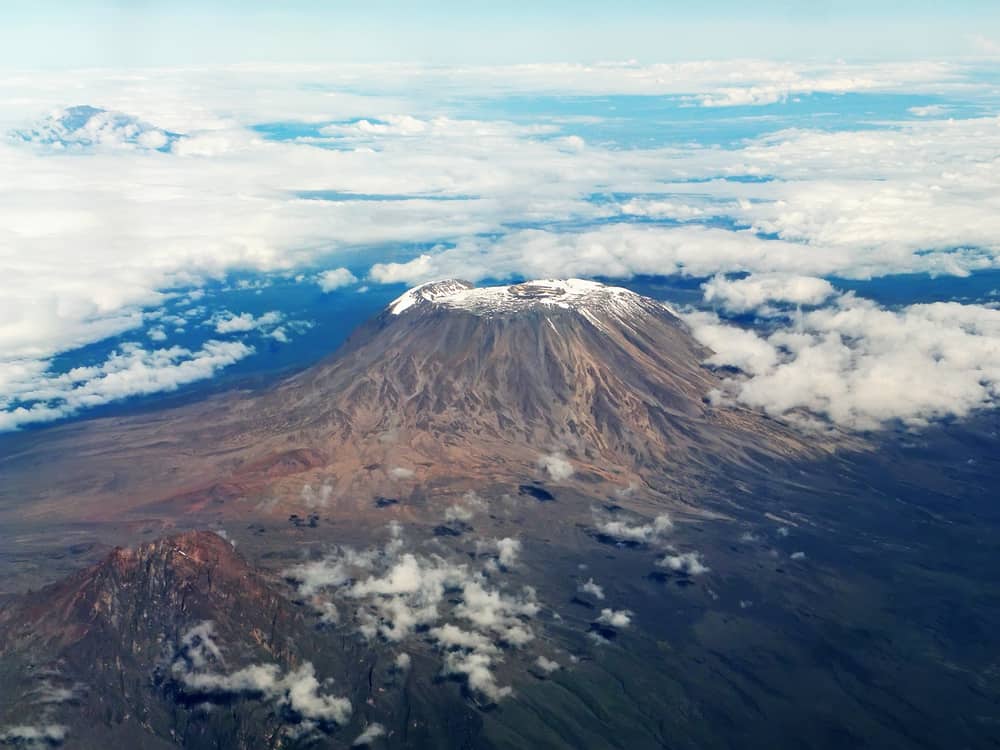
Kilimanjaro is not only Africa’s tallest peak, but also the world’s tallest free standing mountain. The summit, named Uhuru Point, is 5,895 meters (19,341 feet) above sea level.
Most high mountains are part of ranges, such as Mount Everest’s Himalayan Mountain Range. These are formed in a process called plate tectonics. Below the ground, Earth’s crust is made up of multiple tectonic plates. These plates have been moving since the beginning of time due to geologic activity.
When plates push against each other, the edges crumple, forcing slabs of rock into the air. These are known as fold mountains and are the most common type of mountain. A fault-block mountain range is caused when a fault (crack) in the Earth’s crust pushes blocks of rock up between two tectonic plates. The uplifted blocks become block mountains.
Free standing mountains like Kilimanjaro are usually a result of volcanic activity. Volcanic mountains are formed when molten rock erupts, and piles upon the surface.
3. The mountain is on the equator.
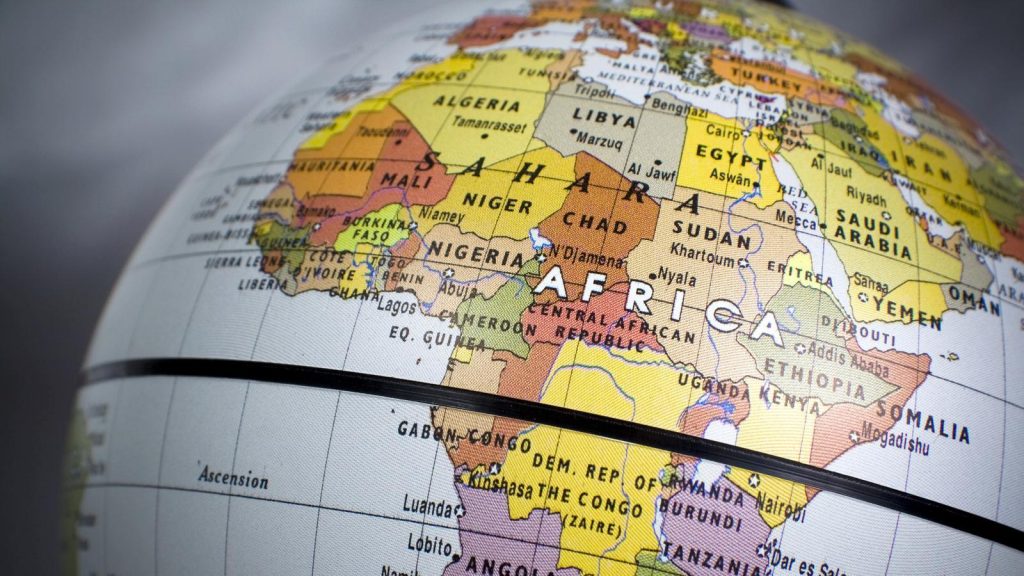
The equator is an imaginary line that divides the Northern Hemisphere and Southern Hemisphere. It passes through the exact center of the Earth and divides it in half.
The equator is distinct from the rest of the globe due to the high amount of solar radiation it receives. The equatorial climate stays nearly the same year-round. The dominant patterns here are either warm and wet or warm and dry.
Mount Kilimanjaro lies just 205 miles from the equator, in the country of Tanzania. When early explorers reported seeing glaciers on the top of Kilimanjaro, people did not believe them as they thought it was impossible for ice to form so close to the hot, equatorial sun. Scientists now believe that the glaciers shrink and then regrow during the planet’s ice ages.
4. Three volcanic cones created it.
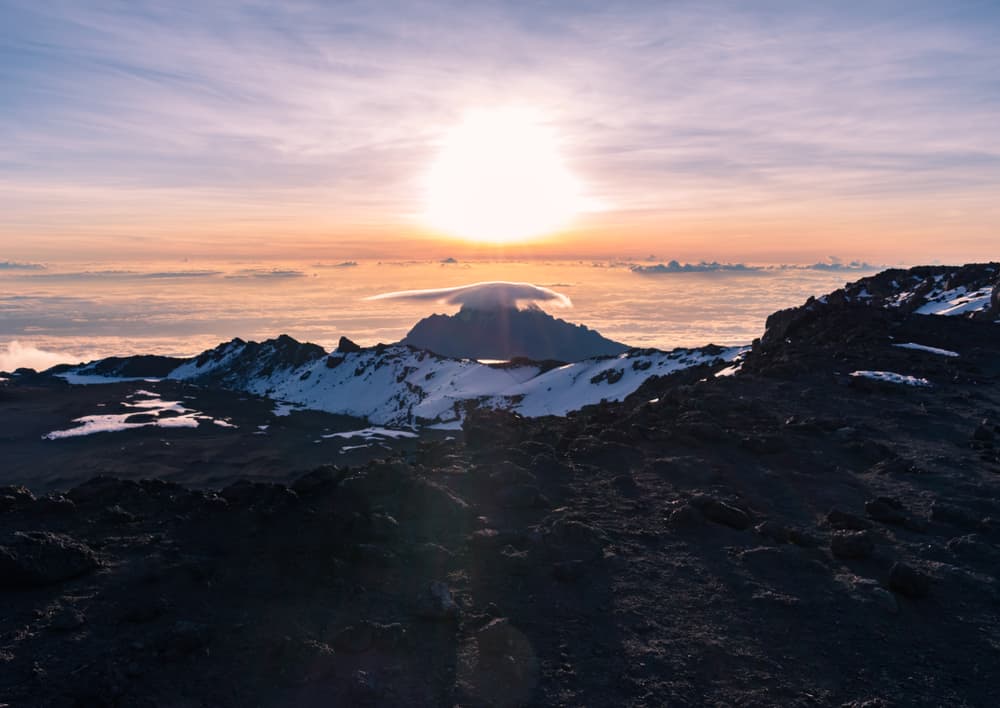
As mentioned above, Kilimanjaro was formed from volcanic activity. However, the mountain once had three volcanic cones – Kibo, Shira and Mawenzi.
- Kibo (19,340’/5,895m)
- Mawenzi (16,893’/5,149m)
- Shira (13,000’/3,962m)
Kibo is the tallest cone and also the central cone. This is where Kilimanjaro’s summit lies. It was formed 460,000 years ago.
Mawenzi is a craggy peak that ranks as the third highest peak in Africa, after Kibo and Mount Kenya (12,549’/3825m). You will have good views of Mawenzi on the Rongai and Northern Circuit routes.
Shira is no longer a peak. It is estimated to have been about 16,000 feet high before it collapsed, creating the Shira Plateau on the western side of the mountain. The Machame, Lemosho and Shira routes trek across this feature.
5. Kilimanjaro isn’t dead; it’s dormant.
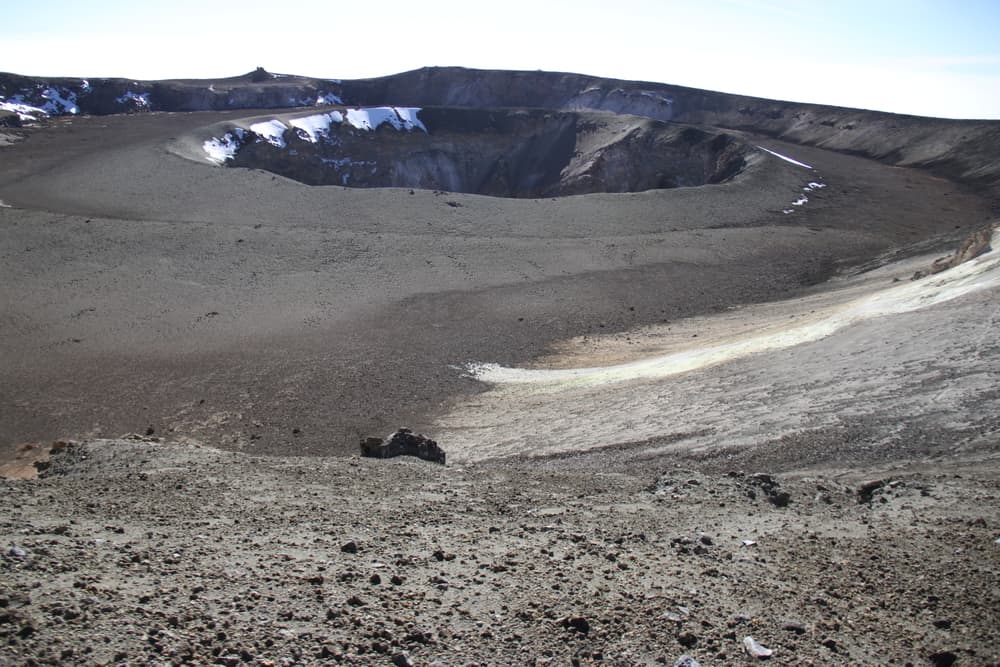
Mount Kilimanjaro is a stratovolcano – a term for a very large volcano made of ash, lava, and rock. Shira and Mawenzi are extinct volcanoes, meaning that there is no activity underneath these cones. In short, they are cut off from their supply of lava.
However, Kibo is considered a dormant volcano; it can erupt again! If a volcano hasn’t erupted in the last 10,000 years, but scientists think it will erupt again, it’s considered dormant.
The last major eruption was 360,000 years ago. The most recent activity was 200,000 years ago. The ash pit is a two hour round trip hike from the highest campsite, Crater Camp. Those who visit the ash pit will be greeted by the smell of sulfur from the volcano’s lava.
6. No one knows the real meaning of ‘Kilimanjaro.’
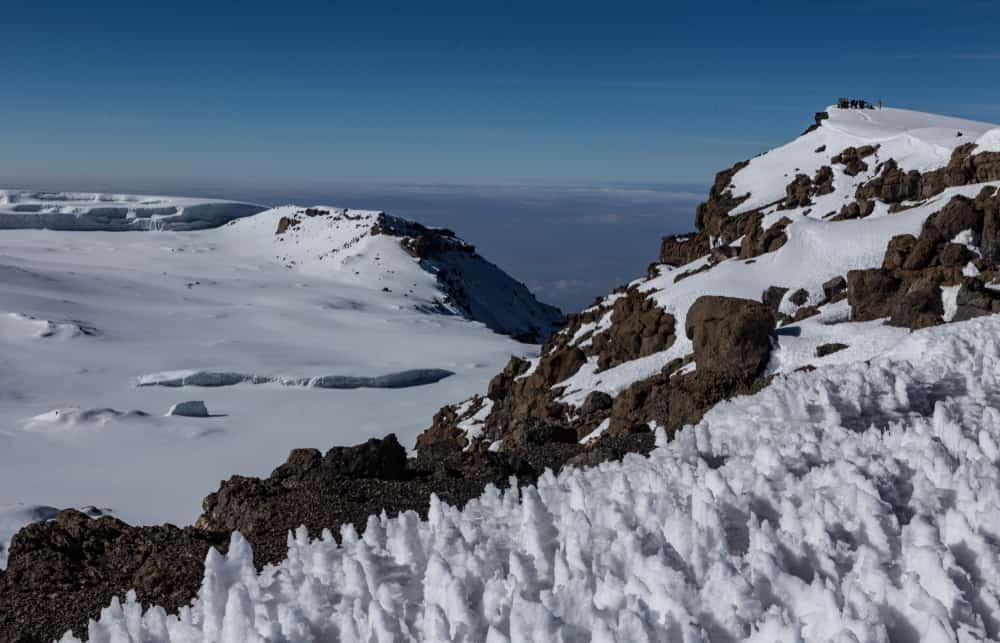
The origin of the name Kilimanjaro is not certain.
European explorers had adopted the name by 1860 and reported that “Kilimanjaro” was the mountain’s Swahili name. But according to the 1907 edition of The Nuttall Encyclopædia, the name of the mountain was “Kilima-Njaro,” comprised of the Swahili word “Kilima” meaning “mountain” and the Chagga word “Njaro” meaning “whiteness.”
German missionary Johann Ludwig Krapf wrote in his Missionary Labours (1860), “The Swahili of the coast call the snow-mountain Kilimanjaro, “mountain of greatness.” It may also mean “mountain of caravans” (kilima – mountain; jaro caravans), a landmark for caravans seen everywhere from afar, but the inhabitants of Jagga call it Kibo, `snow.”
Another possibility is that Kilimanjaro is the European pronunciation of a KiChagga phrase meaning “we failed to climb it.”
7. The first ascent was more than a century ago.
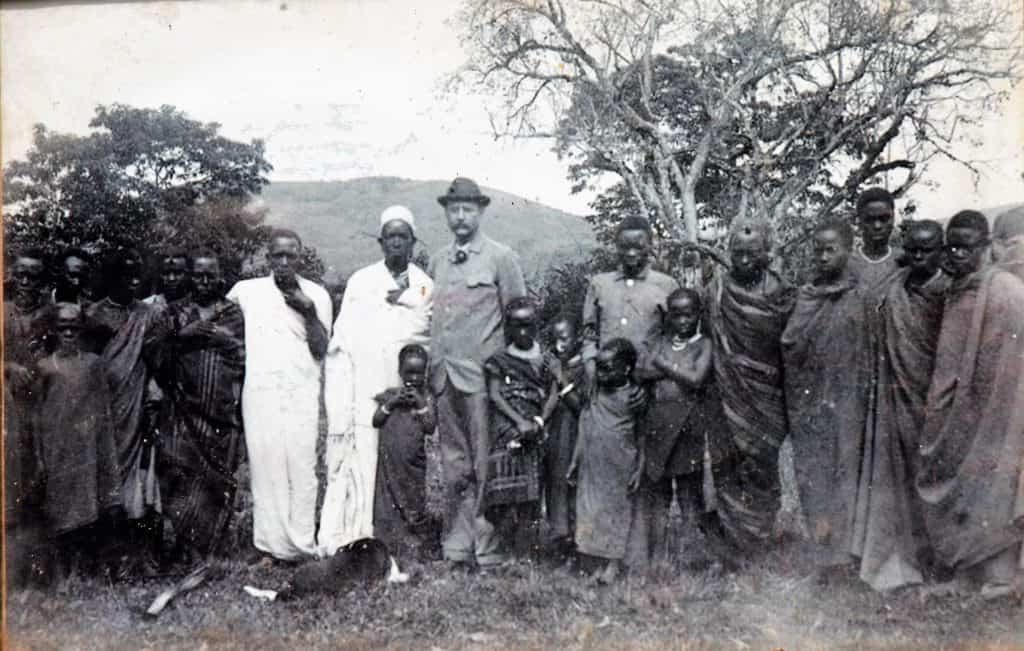
Mount Kilimanjaro was first climbed in 1889 by a German geologist Hans Meyer, an Austrian climber Ludwig Purtscheller and a local guide Yohani Kinyala Lauwo.
On Meyer’s first attempt in 1887, he made it to the base of Kibo but had to turn around there. He encountered thick snow and ice walls and did not have equipment for heavy snow and ice.
He made a second attempt in 1888 that was also unsuccessful. But it was not due to the mountain itself, but because Meyer was captured and held as a prisoner by locals as part of the Abushiri Revolt, when the Arab and Swahili population rebelled against German traders. He was freed after a ransom was paid.
Meyer finally succeeded in 1889. His support team included a guide, two local tribe leaders, nine porters, and a cook. They reached the summit on the southern rim of the crater. The Marangu route closely follows Meyer’s groundbreaking path up and down Kilimanjaro.
8. Half of the people who attempt Kilimanjaro fail.
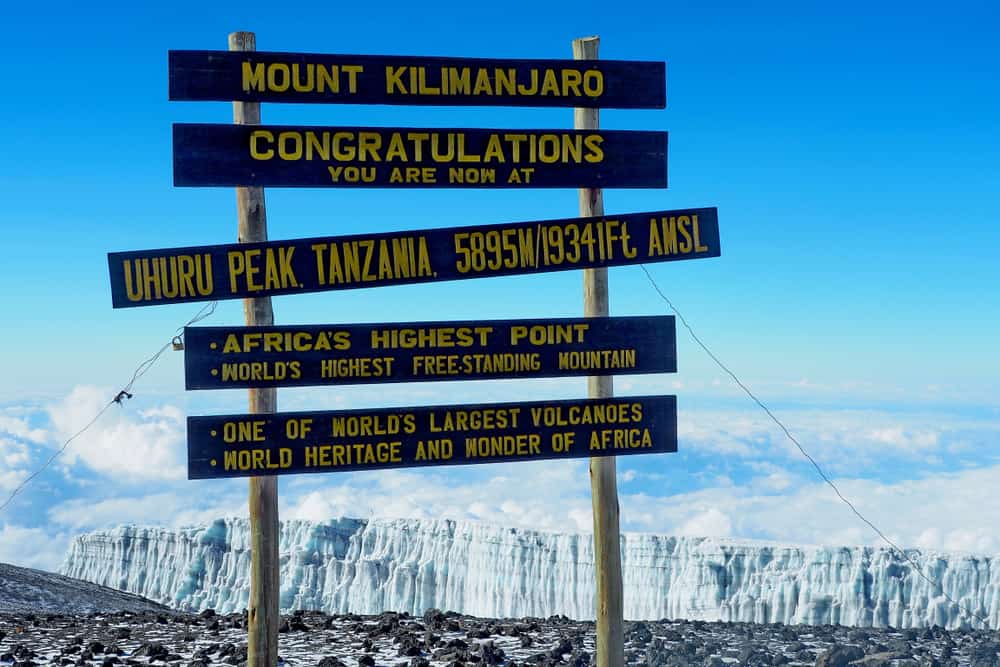
Now approximately 30,000 people climb Kilimanjaro every year. Though not substantiated, it is often reported that 50% of climbers fail. This comes as a surprise as Kilimanjaro is not regarded as a particularly difficult peak when compared to other mountains. After all, it is not a technical peak and does not require superhuman abilities to scale it.
Why do so many people fail? Mostly due to altitude sickness. People make the mistake of selecting the wrong route. Many who fail choose to climb on the Marangu Route, which is the shortest path (five days round trip) to the peak. However, the best way to climb is to use a longer route to aid in acclimatization.
Additionally, many people climbing Kilimanjaro are first time backpackers. They do not adequately prepare for their climb in terms of having the right gear, doing enough training, and hiring a reputable guide service.
9. Elite athletes have climbed Kilimanjaro really fast.
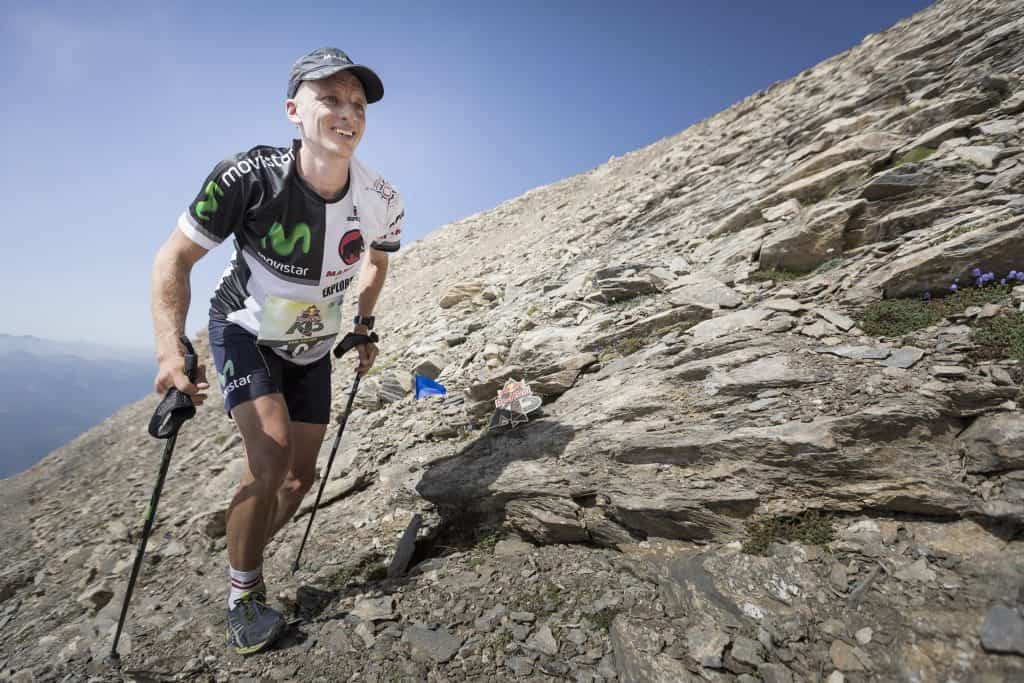
Kilimanjaro has been tackled at a pace that will amaze you. The fastest ascent and descent of Kilimanjaro was completed by Swiss Karl Egloff in just 6 hours and 42 minutes in 2014.
How is this possible? Athletes who do perform speed climbs of high altitude mountains have already well acclimatized to the altitude prior to their attempt. They’ve spent many days or weeks at high elevation to prepare. Therefore the risk of acute mountain sickness is eliminated.
Some other notable accomplishments include Spanish mountain runner Killian Jornet’s ascent to Uhuru Peak in just 5 hours 23 minutes and 50 seconds in 2010.
German Anne-Marie Flammersfeld holds the record for the fastest ascent and descent by a woman on Kilimanjaro, climbing to the summit in 8 hours 32 minutes and reaching the bottom in a total time on the mountain of 12 hours 58 minutes in 2015.
The record for fastest unaided ascent (meaning that the climber carried his own food, water and clothing) is held by Tanzanian Simon Mtuy, who climbed to the summit and back in 9 hours 19 minutes in 2006.
10. The young and the old have conquered Kilimanjaro.
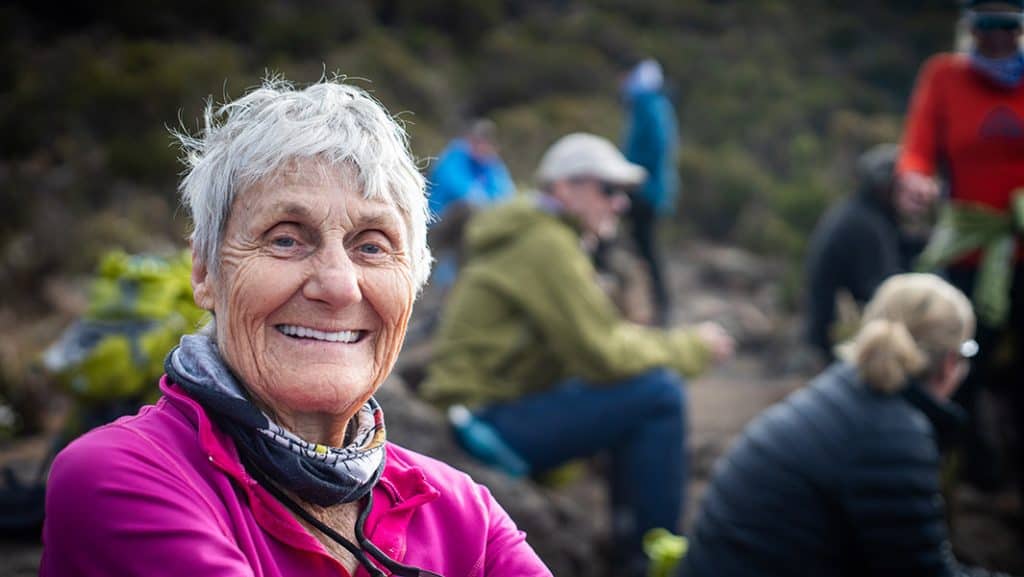
Anyone with a reasonable degree of fitness can climb Kilimanjaro. Here is the proof.
The oldest person to successfully climb Kilimanjaro is 89 year old American woman Anne Lorimor, led by Ultimate Kilimanjaro®. She took the world record in 2019 from Dr. Fred Distelhorst, who was 88 when he summited.
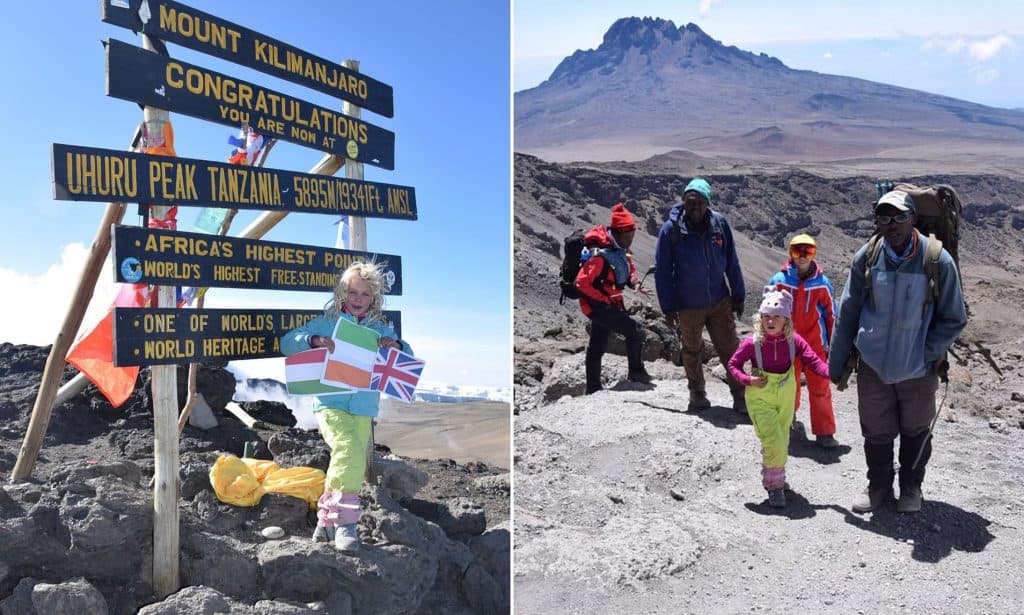
The youngest person to climb Kilimanjaro is American Coaltan Tanner, who summited at age six in 2018. The youngest girl to summit is Ashleen Mandrick, who was also six years old when she accomplished the feat, wrestling that title away from Montannah Kenney, who was seven.
The minimum age for climbing Kilimanjaro is 10 years old, but the park authority grants exceptions to children who have significant experience trekking.
11. The journey to the summit is like going from the equator to Antarctica.
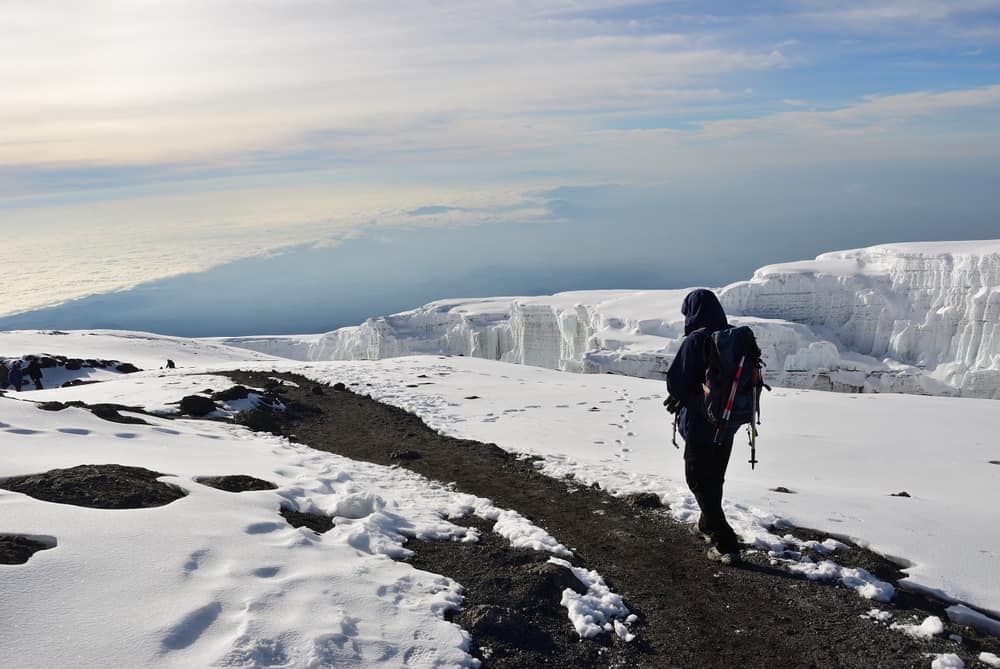
While climbing Kilimanjaro, trekkers will experience five distinct ecological zones on their way to the top. These include:
- Bushland/Cultivated Zone: 2,600′-6,000’/800m-1,800m
- Rainforest Zone: 6,000′-9,200’/1,800m-2,800m
- Heath/Moorland Zone: 9,200′-13,200’/2,800m-4,000m
- Alpine Desert Zone: 13,200′-16,500’/4,000m-5,000m
- Arctic Zone:16,500’+/5,000m+
Weather conditions near the base of the mountain tend to be tropical to semi-temperate and are relatively stable all year round. The lower plains are hot and dry. As one heads away from the bushland towards the rainforest, conditions become increasingly warm and humid.
Each zone gets colder and drier as the elevation increases. Plant and animal life also disappear with the rise in altitude through the heath and alpine desert zones.
The summit is in the arctic zone, characterized by ice and rock. At this altitude, categorized as “extreme”, there can be no permanent human habitation as the body is in a state of deterioration (short exposures are OK).
12. Kilimanjaro’s ice cap is destined to disappear.
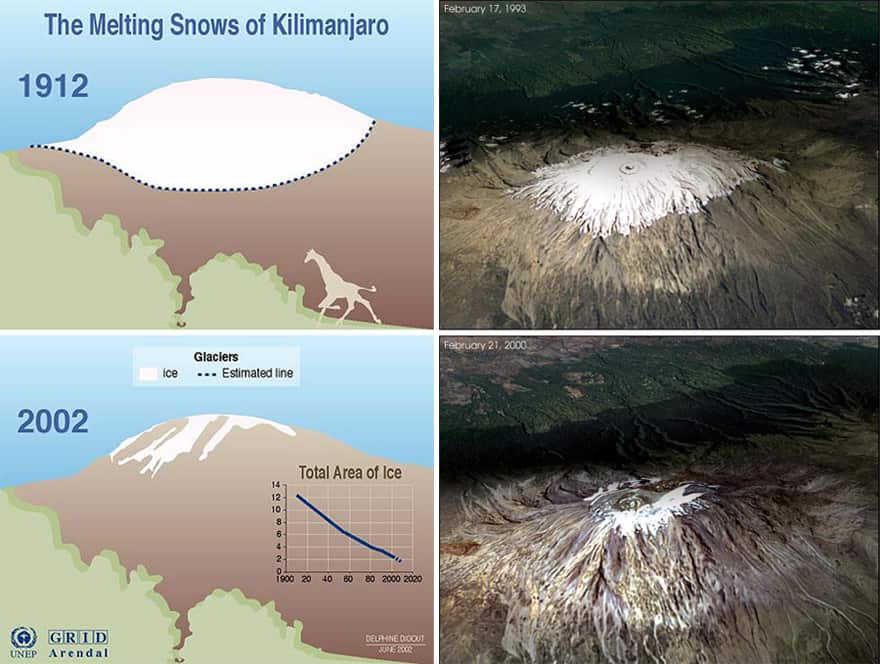
Kilimanjaro’s glaciers are the poster child of global climate change. It’s icecap has shrunk 82% since 1912. Scientists estimate the glaciers may be completely gone in 50 years. The cause of this is thought to be due to deforestation, and not necessary global warming.
Melting and sublimation (the transition from solid phase directly to vapor) both contribute to the ice loss, says study author Doug Hardy, a glaciologist from the University of Massachusetts at Amherst. The glaciers have been in retreat for more than a century, Hardy says, with a drying climate in East Africa one main culprit.
Nearly 5 million indigenous trees were planted around the base of the mountain in 2008 to combat the issue.
If you are thinking about climbing Kilimanjaro, the time to do it is soon.
INTERESTED IN CLIMBING KILIMANJARO?
Visit Ultimate Kilimanjaro for more information and see our Dates & Prices.
Download our Kilimanjaro Guide.












































